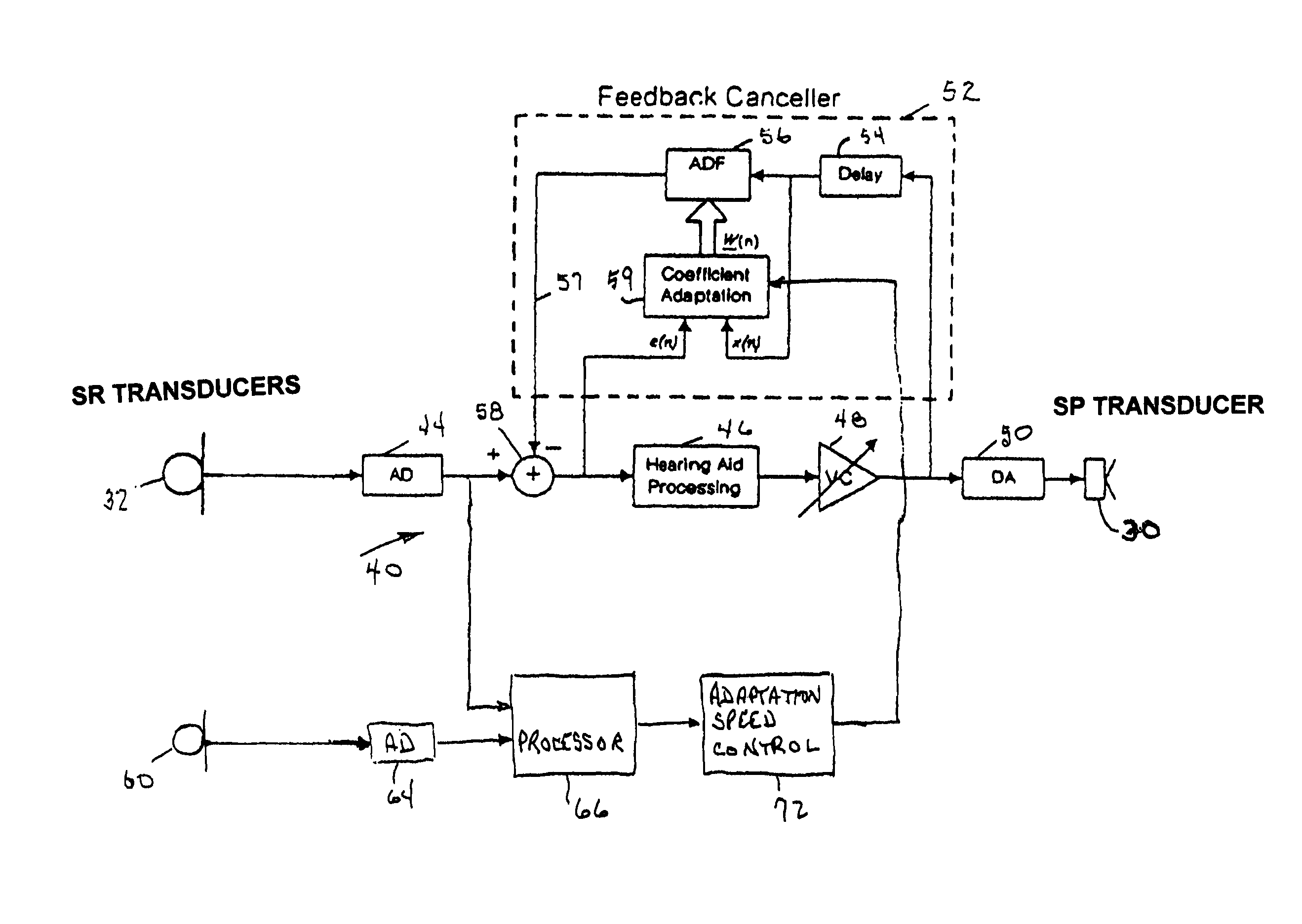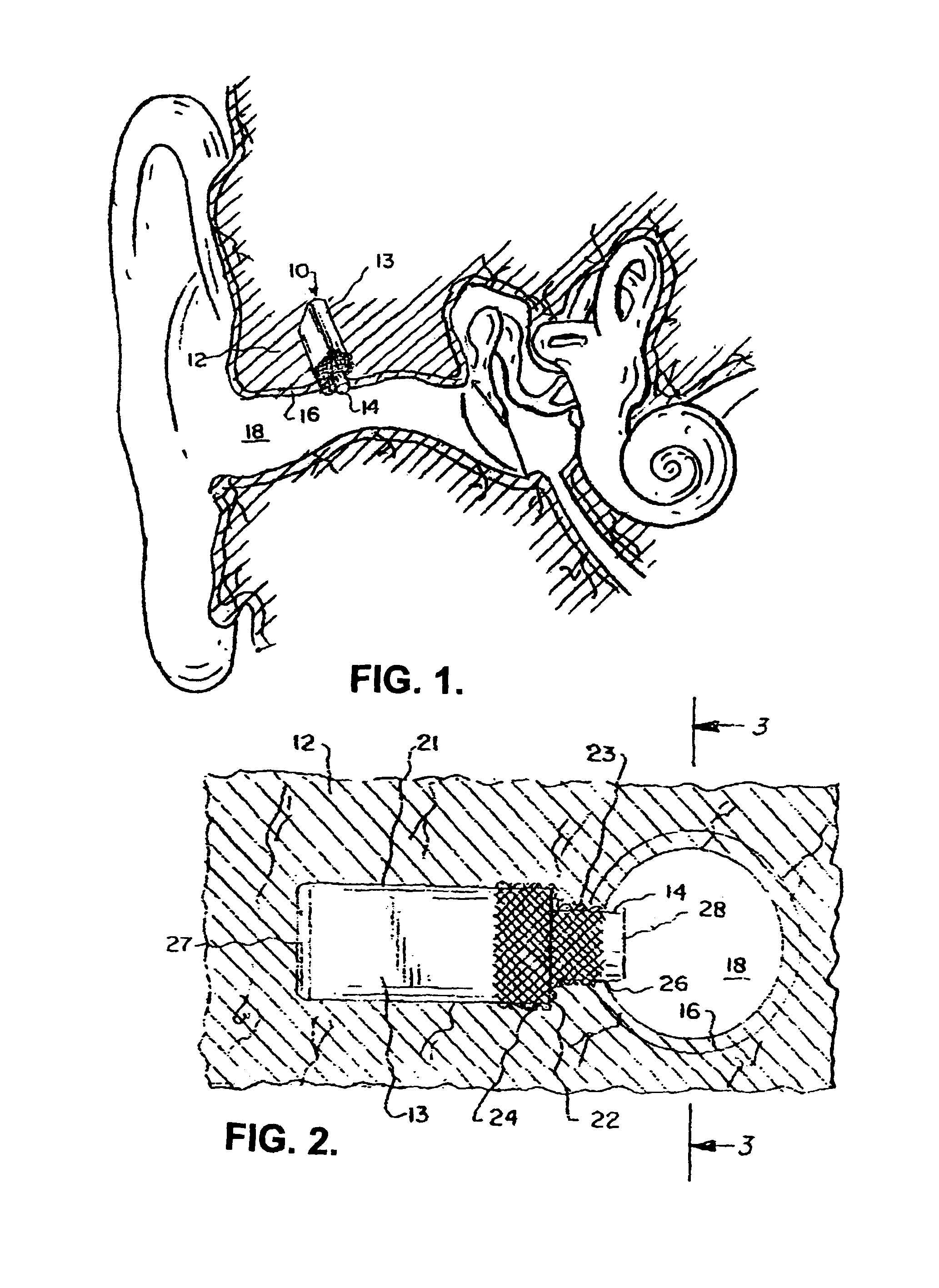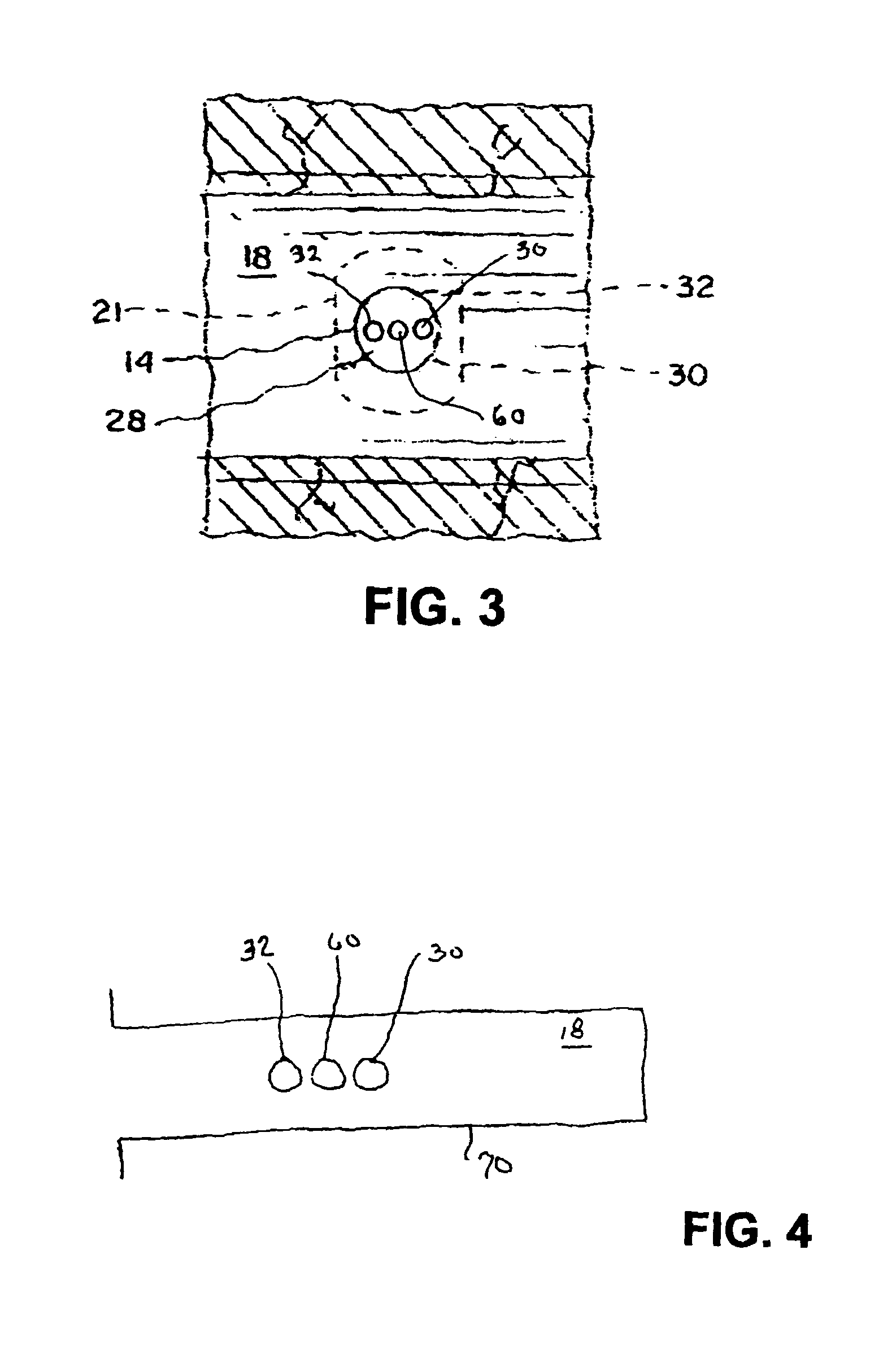In-the-canal hearing aid using two microphones
a hearing aid and microphone technology, applied in the field of hearing aid systems, can solve the problems of annoying oscillation, low adaptability of adaptive cancellation filters, and difficulty in avoiding feedback induced oscillation in open canal hearing aids with high amplification gain, and achieve the effect of enhancing the performance of in-the-canal hearing aids and increasing the adaptability speed of adaptive cancellation filters
- Summary
- Abstract
- Description
- Claims
- Application Information
AI Technical Summary
Benefits of technology
Problems solved by technology
Method used
Image
Examples
Embodiment Construction
[0017]The present invention is useful in a hearing aid system including a sound producing (SP) transducer (e.g., speaker) and a primary sound responsive (SR) transducer (e.g., microphone) mounted in (where “in” is intended to include—adjacent to—) a user's ear canal. A system in accordance with the present invention additionally incorporates a secondary SR transducer mounted in the ear canal in order to detect impedance changes in the audio feedback path, i.e., from the SP transducer to the primary SR transducer. As will be described hereinafter, the detected impedance changes are used to influence an adaptive feedback cancellation filter coupling the SP transducer to the primary SR transducer.
[0018]The particular manner of mounting the transducers in the user's ear canal is not critical to the present invention. FIGS. 1-3 to be described hereinafter depict one preferred mounting technique but it should be understood that various other techniques can be used to fixedly locate the tr...
PUM
 Login to View More
Login to View More Abstract
Description
Claims
Application Information
 Login to View More
Login to View More - R&D
- Intellectual Property
- Life Sciences
- Materials
- Tech Scout
- Unparalleled Data Quality
- Higher Quality Content
- 60% Fewer Hallucinations
Browse by: Latest US Patents, China's latest patents, Technical Efficacy Thesaurus, Application Domain, Technology Topic, Popular Technical Reports.
© 2025 PatSnap. All rights reserved.Legal|Privacy policy|Modern Slavery Act Transparency Statement|Sitemap|About US| Contact US: help@patsnap.com



